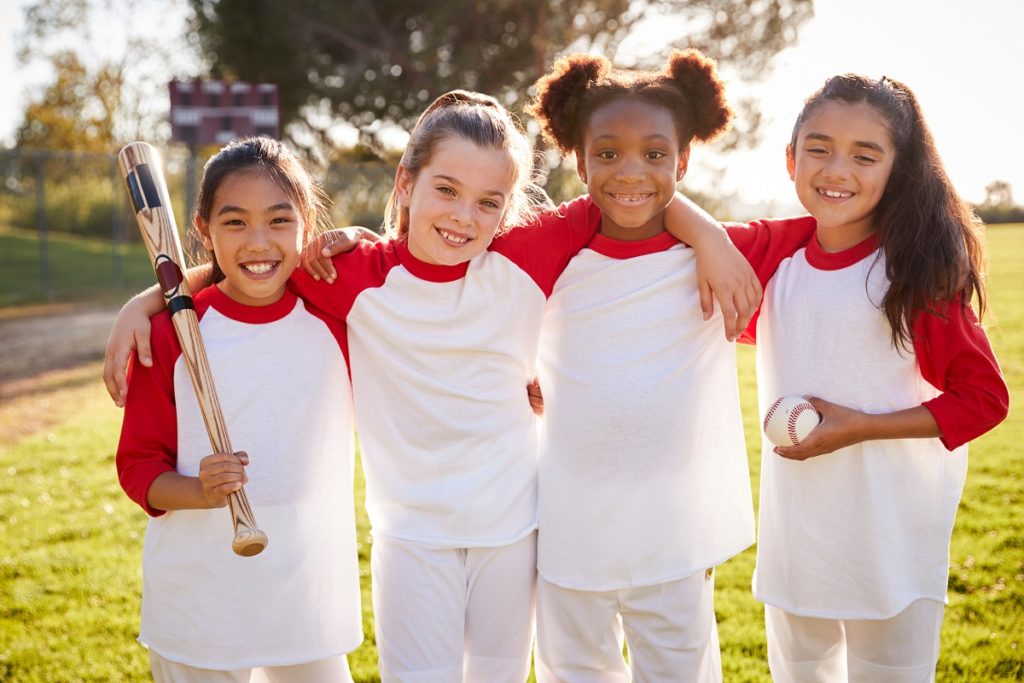Parents have many reasons for pushing their kids into sports. One of the most common reasons is the parents themselves also being athletes. But even nonathletic parents are eager to get their children into sports as well.
Sports do wonders for a child’s health. It reduces their screen time, allowing them to get more fresh air and exercise. Studies also show that the perks of playing organized sports have a ripple effect throughout life: kids will have a more positive body image, get higher grades in middle school and high school, and be less likely to do drugs.
Children can also gain psychological benefits from sports. It teaches them to cope with failure better. It ingrains an unrelenting sense of determination and pride in them, particularly when they want to score or try out for a team. But when they lose, they don’t see it as a reason for giving up.
But on the flip side, sports can have undesirable effects on kids, too. It makes them more vulnerable to injuries, some of which can alter their lives for the long term. Also, the culture in sports isn’t always healthy. Some national sports teams have been involved in shocking scandals that make up a parent’s worst nightmare.
Risks of Getting Your Kids into Sports
1. Injuries
Every parent’s first concern about sports is injuries. The following are the most common youth sports injuries:
- Ankle sprain — Sometimes referred to as “rolling” or “turning” the ankle. Ankle sprains damage the supporting ligaments in the ankle. It usually heals after a brief period of rest, followed by a recovery exercise program.
- Knee pain — This injury is most prevalent in sports played by females. It is considered an overuse injury and medically known as “patellofemoral syndrome.” The pain in front of the knee is caused by excessive pressure on the kneecap or patella. Physical therapy treats this injury.
- Osgood-Schlatter — This a type of knee injury that occurs in a special type of growth plate called “apophysis”, which is located above the shin. It is a traction injury that results from tight and strong muscles and high activity levels. It may cause swelling at the bottom of the knee. Rest, stretching, cold compress, non-steroidal anti-inflammatory drugs, and a knee-strap can treat this injury.
- Little Leaguer’s Elbow — This is also an overuse injury, causing pain in the elbow due to excessive throwing motions. Rest and training in proper throwing form can treat it, but severe cases may require surgery.
- ACL tears — Anterior cruciate ligament (ACL) tears occur when the ligament in the kneecap becomes overly twisted. Surgery is often the only cure since ACL tears can also affect the other parts of the knee. An athlete recovering from this injury typically needs to wait seven to nine months before playing again.
Your child is lucky if their minor injury can be mended by a trained chiropractor. But if they sustained a severe, crippling injury, they may need to undergo surgery and a long period of physical therapy. This may cause distress to your kid.
2. Mental Health Issues

Despite an athlete’s sense of determination, strong will, and grit, an injury can still dampen their spirits and weaken their mental health. A student athlete’s normal reaction after getting injured is to process medical information about their condition. Then they’d exhibit an emotional response, which may include:
- Sadness
- Feeling of isolation
- Irritation
- Decreased motivation
- Anger and frustration
- Changes in appetite
- Troubled sleep
- Disengagement
Their response to their injury begins when they sustain it and will last until they return to their sport. However, if their injury puts their athleticism at stake, you should be prepared to deal with a more intense emotional response and mental health issues. Their health care provider should consider the possible psychological effects and offer them help.
An injured athlete may experience depression, eating disorders, and suicidal tendencies. Don’t treat this as a phase; take them to counseling to help them overcome the ordeal.
3. Sporting Scandals
Sports teams, especially elite ones, have been subject to controversy more than once. Some of the most notable scandals involved cheating, sabotaging a rival, and even sexual abuse.
The biggest abuse scandal in sports history happened to the US women’s team in gymnastics. It was revealed that their team doctor, Larry Nassar, had been molesting the athletes for more than a decade. His trial was aired on television, with 156 victims delivering statements.
Nassar was sentenced to 60 years and 125 years for separate cases related to sexual abuse. The scandal re-emerged recently, when the ex-head coach of the team, John Geddert, committed suicide. Geddert was also facing felony charges, as well as human trafficking and sexual assault.
While these scandals and other risks cloak sports in a grim shadow, being an athlete is still a respectable and prestigious career. No amount of negative incidents can change that. The only thing that needs to change is the culture, which should prioritize more on the athletes’ well-being.

